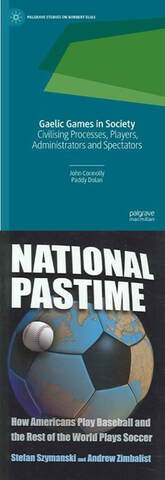
All involved could do worse than to read a couple of chapters from a superb new book by John Connolly and Paddy Dolan. The book is called Gaelic Games in Society. Unfortunately, it does not have the most welcoming of presentations. The cover is unexciting and it is published under the Palgrave Studies on Norbert Elias. If it were not for the prompting of a respected colleague then I would not have read the book.
The title of this blog post is taken from the book. The authors never let the reader forget that the economic exchange is based on players performing. Around this reality they craft a wonderful account of the tension between amateurism and professionalism. And between administrators and players. Sociology (and not economics) is the main framework for their analysis but it is not a forbidding academic treatment that one might expect (even allowing for the nod to Elias).
The authors do an exceptional job explaining the way gaelic games were promoted to the playing and paying public. Stigmatisation and gossip playing key roles. They explain how "competitive interdependences" drove expenditure on team preparations. They also document how the "seriousness of involvement" and "self-regulation commitments" increased the demands on unpaid players. This all contributed to a change in the balance of power away from administrators towards players. [There are no "owners" in the GAA.]
The book reminds me a little of National Pastime: How Americans Play Baseball and the Rest of the World Plays Soccer. The circumstances of the late 19th century and early 20th century being crucial in both cases. Initial differences took on a self-sustaining element. Interests were established and these interests promoted their sports. Within the GAA, there were also different interests. As the authors explain, "the interdependences between players and administrators were complex and they were bonded through both conflictual and cooperative interdependences". The bonds remain even though the balance of power has shifted.
 RSS Feed
RSS Feed